| |||||
| Decades: | |||||
|---|---|---|---|---|---|
| See also: | Other events of 1779 List of years in Spain | ||||
This article needs additional citations for verification .(February 2024) |
Events from the year 1779 in Spain.
| |||||
| Decades: | |||||
|---|---|---|---|---|---|
| See also: | Other events of 1779 List of years in Spain | ||||
This article needs additional citations for verification .(February 2024) |
Events from the year 1779 in Spain.

The American Revolutionary War, also known as the Revolutionary War or American War of Independence, was an armed conflict that was part of the broader American Revolution, in which American Patriot forces organized as the Continental Army and commanded by George Washington defeated the British Army. The conflict was fought in North America, the Caribbean, and the Atlantic Ocean. The war ended with the Treaty of Paris (1783), which resulted in Great Britain ultimately recognizing the independence of the United States of America.

1779 (MDCCLXXIX) was a common year starting on Friday of the Gregorian calendar and a common year starting on Tuesday of the Julian calendar, the 1779th year of the Common Era (CE) and Anno Domini (AD) designations, the 779th year of the 2nd millennium, the 79th year of the 18th century, and the 10th and last year of the 1770s decade. As of the start of 1779, the Gregorian calendar was 11 days ahead of the Julian calendar, which remained in localized use until 1923.
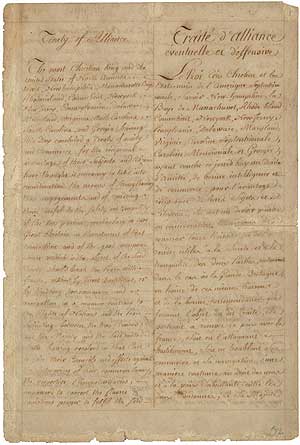
The Treaty of Alliance, also known as the Franco-American Treaty, was a defensive alliance between the Kingdom of France and the United States formed amid the American Revolutionary War with Great Britain. It was signed by delegates of King Louis XVI and the Second Continental Congress in Paris on February 6, 1778, along with the Treaty of Amity and Commerce and a secret clause providing for the entry of other European allies; together these instruments are sometimes known as the Franco-American Alliance or the Treaties of Alliance. The agreements marked the official entry of the United States on the world stage, and formalized French recognition and support of U.S. independence that was to be decisive in America's victory.

The Tumult of Aranjuez, also known as the Mutiny of Aranjuez, was an uprising led against King Charles IV that took place in the town of Aranjuez, Spain, on 17–19 March 1808. The event, which is celebrated annually in the first week of September, commemorates the fall of the monarch and the subsequent accession of his son Ferdinand VII. It is celebrated in September rather than in March as the revived celebrations in Aranjuez that began in 1988 were added on top of pre-existing September festivals.
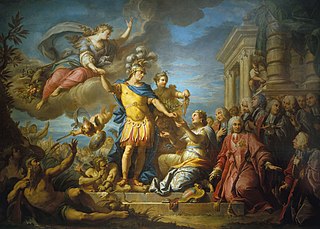
The 1748 Treaty of Aix-la-Chapelle, sometimes called the Treaty of Aachen, ended the War of the Austrian Succession, following a congress assembled on 24 April 1748 at the Free Imperial City of Aachen.

The Kingdom of Etruria was an Italian kingdom between 1801 and 1807 that made up a large part of modern Tuscany. It took its name from Etruria, the old Roman name for the land of the Etruscans.

The Pacte de Famille is one of three separate, but similar alliances between the Bourbon kings of France and Spain. As part of the settlement of the War of the Spanish Succession that brought the House of Bourbon of France to the throne of Spain, Spain and France made a series of agreements that did not unite the two thrones, but did lead to cooperation on a defined basis.

French involvement in the American Revolutionary War of 1775–1783 began in 1776 when the Kingdom of France secretly shipped supplies to the Continental Army of the Thirteen Colonies upon its establishment in June 1775. France was a long-term historical rival with the Kingdom of Great Britain, from which the Colonies were attempting to separate.

The Great Siege of Gibraltar was an unsuccessful attempt by Spain and France to capture Gibraltar from the British during the American Revolutionary War. It was the largest battle in the war by number of combatants.
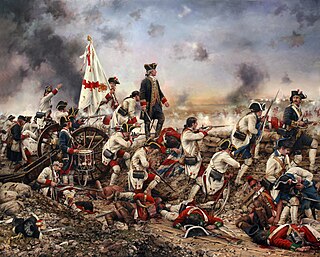
Spain, through its alliance with France and as part of its conflict with Britain, played a role in the independence of the United States. Spain declared war on Britain as an ally of France, itself an ally of the American colonies. Most notably, Spanish forces attacked British positions in the south and captured West Florida from Britain in the siege of Pensacola. This secured the southern route for supplies and closed off the possibility of any British offensive through the western frontier of the United States via the Mississippi River. Spain also provided money, supplies, and munitions to the American forces.
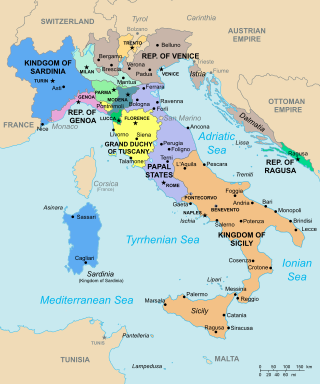
The Treaty of Aranjuez (1801) was signed on 21 March 1801 between France and Spain. It confirmed a previous secret agreement in which Spain agreed to exchange Louisiana for territories in Tuscany. The treaty also stipulated Spain's cession of Louisiana to be a "restoration", not a retrocession.

The Treaty of Aranjuez was signed on 3 June 1777 between France and Spain. Based on the terms of the treaty, the two countries agreed to define the border of their respective colonies on the island of Santo Domingo in the Caribbean Sea, of which they shared ownership. Spain made substantial gains in the upper Artibonite Valley in middle section of the island. The new border was to be marked by border stones. It was signed at Aranjuez Palace, near Madrid, in Spain. It was one of a number of diplomatic agreements signed at the palace in the eighteenth century and should not be confused with the 1779 Treaty of Aranjuez between the two states, which led to Spain's entry into the American War of Independence.
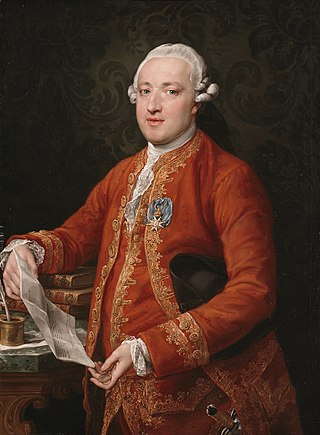
In the Treaty of Aranjuez, Spain agreed to support France in its war with Britain. This was in return for assistance in recovering its former possessions of Menorca, Gibraltar, and Spanish Florida.
The Treaty of Aranjuez may refer to:

Louisiana, or the Province of Louisiana, was a province of New Spain from 1762 to 1801 primarily located in the center of North America encompassing the western basin of the Mississippi River plus New Orleans. The area had originally been claimed and controlled by France, which had named it La Louisiane in honor of King Louis XIV in 1682. Spain secretly acquired the territory from France near the end of the Seven Years' War by the terms of the Treaty of Fontainebleau (1762). The actual transfer of authority was a slow process, and after Spain finally attempted to fully replace French authorities in New Orleans in 1767, French residents staged an uprising which the new Spanish colonial governor did not suppress until 1769. Spain also took possession of the trading post of St. Louis and all of Upper Louisiana in the late 1760s, though there was little Spanish presence in the wide expanses of what they called the "Illinois Country".
Diplomacy was central to the outcome of the American Revolutionary War and the broader American Revolution. Before the outbreak of armed conflict in April 1775, the Thirteen Colonies and Great Britain had initially sought to resolve their disputes peacefully from within the British political system. Once open hostilities began, the war developed an international dimension, as both sides engaged in foreign diplomacy to further their goals, while governments and nations worldwide took interest in the geopolitical and ideological implications of the conflict.

The Franco-American alliance was the 1778 alliance between the Kingdom of France and the United States during the American Revolutionary War. Formalized in the 1778 Treaty of Alliance, it was a military pact in which the French provided many supplies for the Americans. The Netherlands and Spain later joined as allies of France; Britain had no European allies. The French alliance was possible once the Americans captured a British invasion army at Saratoga in October 1777, demonstrating the viability of the American cause. The alliance became controversial after 1793 when Great Britain and Revolutionary France again went to war and the U.S. declared itself neutral. Relations between France and the United States worsened as the latter became closer to Britain in the Jay Treaty of 1795, leading to an undeclared Quasi War. The alliance was defunct by 1794 and formally ended in 1800.
Juan de Miralles y Tizner was a Spanish arms dealer who became friends with George Washington during the American Revolutionary War. He supported the American cause financially, and served as a liaison between the colonists and the Spanish Crown.
Events in the year 1779 in France.

The Anglo-French War, also known as the War of 1778 or the Bourbon War in Britain, was a military conflict fought between France and Great Britain, sometimes with their respective allies, between 1778 and 1783. As a consequence, Great Britain was forced to divert resources used to fight the American War of Independence to theatres in Europe, India, and the West Indies, and to rely on what turned out to be the chimera of Loyalist support in its North American operations. From 1778 to 1783, with or without their allies, France and Britain fought over dominance in the English Channel, the Mediterranean, the Indian Ocean and the Caribbean.
In 1779, Spain signed the Treaty of Aranjuez with France, agreeing to support the French in their war against Great Britain...